You are viewing ARCHIVED content published online before January 20, 2025. Please note that this content is NOT UPDATED, and links may not work. Additionally, any previously issued diversity, equity, inclusion or gender-related guidance on this webpage should be considered rescinded. For current information, visit https://www.blm.gov/blog.
When public land in New Mexico stood in for the Moon
Story by Derrick Henry, Public Affairs Specialist. Photos by Derrick Henry and NASA.
Fifty years ago, NASA’s Apollo 15 moonwalkers rehearsed key parts of their 1971 mission on public land in north-central New Mexico. The landscape — a high-desert valley with a deep gorge chiseling through volcanic basalt flows and ash near Taos and managed by the Bureau of Land Management (BLM) — was remarkably similar to the targeted landing site on the Moon. With the United States seeking to remain №1 in space, the Río Grande Gorge and the surrounding plains provided a real-scale learning lab to give the astronauts an extra edge before reaching the lunar surface. Public lands had once again supported national priorities.
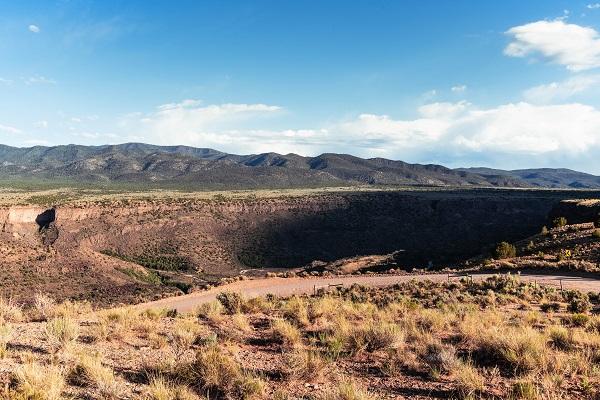
This unique area, currently part of the Río Grande del Norte National Monument, enabled the astronauts and backup crew to work exactly as though they were on the Moon. They navigated a training rover along the gravel-studded shoulders of the gorge; photographed features and landscapes; took core samples; dug trenches; and tested various communications and support equipment. Care was taken that even the angle of the Sun was correct, at their backs, as it would be at Hadley Rille, a rocky valley at the base of the Apennine mountain range on the Moon.
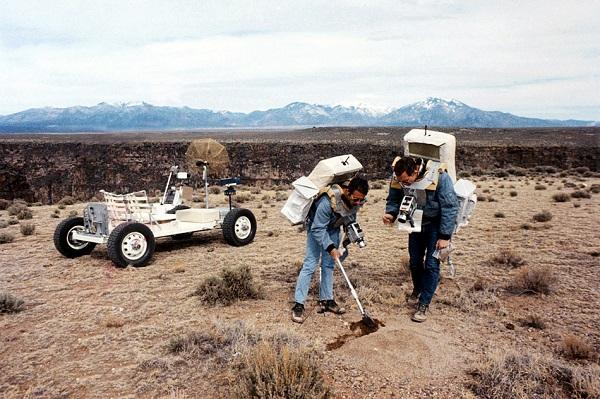
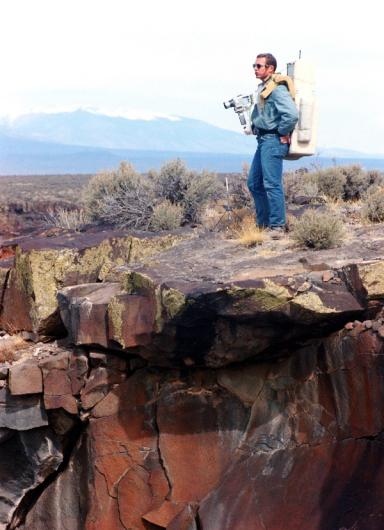
The moonwalkers — Commander David R. Scott and Lunar Module Pilot James B. Irwin — conducted daily practice runs at the Gorge on March 11 and 12. Each night, a full Moon was visible.
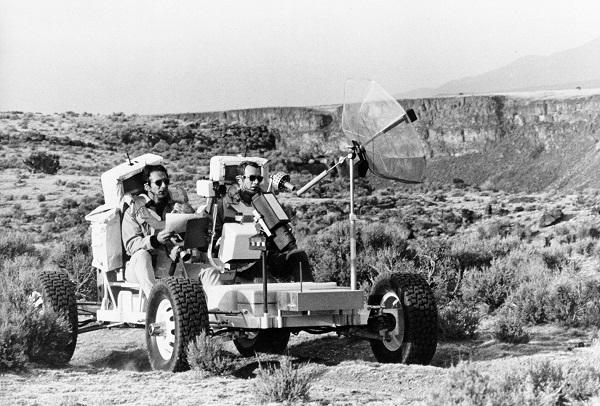
The crew, including Command Module Pilot Alfred M. Worden, who had done aerial and geologic training elsewhere, left Earth the morning of July 26. They entered lunar orbit days later.
With Worden in orbit, moonwalkers Scott and Irwin separated from the command module and landed at Hadley Rille on July 30. There, Scott and Irwin completed 18 hours, 37 minutes of exploration; traveled 17.5 miles in the first car — top speed 10 mph — that humans have ever driven on the Moon; collected more than 170 pounds of lunar samples, set up experiments for later retrieval; obtained a core sample from about 10 feet beneath the lunar surface; and provided extensive oral descriptions and photographic documentation of geologic features. Three days later they flew back to Worden’s orbiting spacecraft to complete other parts of the mission.
The mission ended successfully on August 7 with a splash down in the Pacific Ocean.
America’s public lands have been used numerous times to support space exploration. For example, sites in California, Arizona, Nevada and Idaho, some managed by other agencies, were used for space training. And the Río Grande Gorge isn’t the only BLM-managed land in in New Mexico where astronauts trained. The Apollo 15 group also trained in January 1971 at the Kilbourne Hole, a crater managed by the BLM, in southeastern New Mexico. There, the astronauts collected volcanic samples along the crater’s east rim. As with the Río Grande Gorge, the crew worked as if they were on the Moon.
But it is the Río Grande Gorge area that serves as the most visible of these sites in New Mexico. Located in Taos County, the overall Monument covers 242,500 acres of land featuring canyons, volcanic cones, wild rivers, and native grasslands harboring vital wildlife habitat, unique geologic resources, and imprints of human passage over the past 10,000 years. The unique setting of the Monument provides a wealth of recreational opportunities, such as whitewater rafting, hunting, fishing, hiking, mountain biking, and camping.
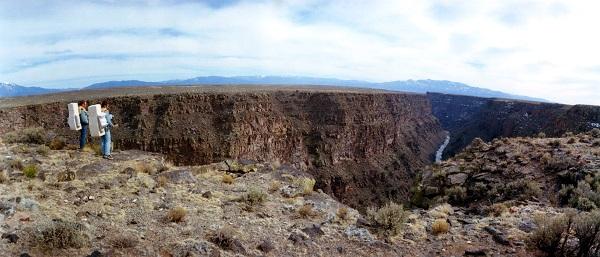
The Apollo 15 crew mostly trained in the vicinity of what is now the Orilla Verde Recreation Area, between La Vista Verde Trailhead and the Dead Cholla Climbing area, south of Taos. The features of that area proved valuable to the crew, who would be working untethered from Earth 240,000 miles away. The Gorge and surrounding area, which has been managed by the BLM since 1968, offers a number of striking similarities to the Hadley Rille.
On the Moon, the Hadley Rille is about one mile wide and about 1,000 feet deep. Here on Earth, parts of the Río Grande Gorge are from 1,000 feet to over 4,000 feet wide, with a depth of about 650 feet. Both the Gorge and the Rille are entrenched in basalt lava flows. Both feature heaps of broken rock and slumped detritus due to slope failure. Geologists for the mission were also attracted to the surface adjacent to the Gorge, which is gently rolling, and covered with various gravels corresponding to the rolling cratered lunar surface and its veneer of rubble. The astronauts drove a training rover along the edge of the Gorge to practice describing the geography and taking photographs with a 500 mm camera.
On a recent visit, there was no sign of the training that occurred 50 years ago. Anglers on the shores of the Río Grande waved to rafters passing mid-river. Farther upslope, day campers prepared sandwiches on a portable table in the cool shadows of the Gorge. Near the La Vista Verde Trailhead, a group of bighorn sheep, outlined in late afternoon sunlight, peered down from the canyon’s shoulders.
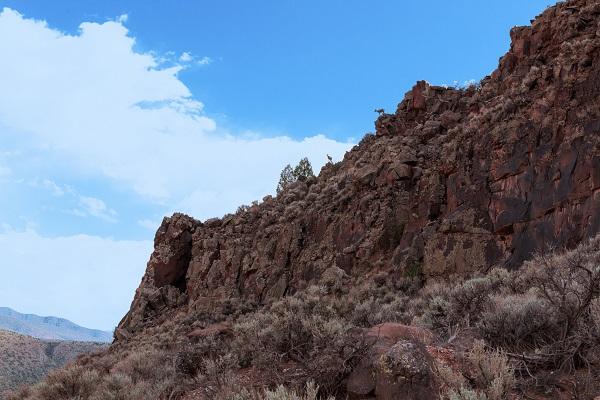
As evening unrolled, rounded shadows, cast by the bend of the Gorge, reached upward along the volcanic walls toward the plain capped with gold sunlight. Upward the shadows continued until the landscape resembled a lunar surface in the fading light. A light breeze stopped for a moment, and it was quiet. The sound of a passing jet overhead brought everyone’s mind back to Earth. For astronauts who trained here, it must have been the best classroom on the planet.
It is estimated that it will take about a million years for the astronauts’ footprints to fade from the Moon. By then, the Río Grande Gorge, knowledge-giver to America’s moonwalkers in 1971, will look nothing like the Hadley Rille.
Related Stories
- Progress on Public Lands: BLM 2025 Trump Administration Accomplishments | January 20 - December 31, 2025
- Popular posts: BLM's most viewed blogs of 2025
- Using science to uncover mysteries of the Mesa archaeological site in Alaska
- Lake Havasu Fisheries Improvement Program is the gift that keeps giving
- BLM is thankful for public lands volunteers
